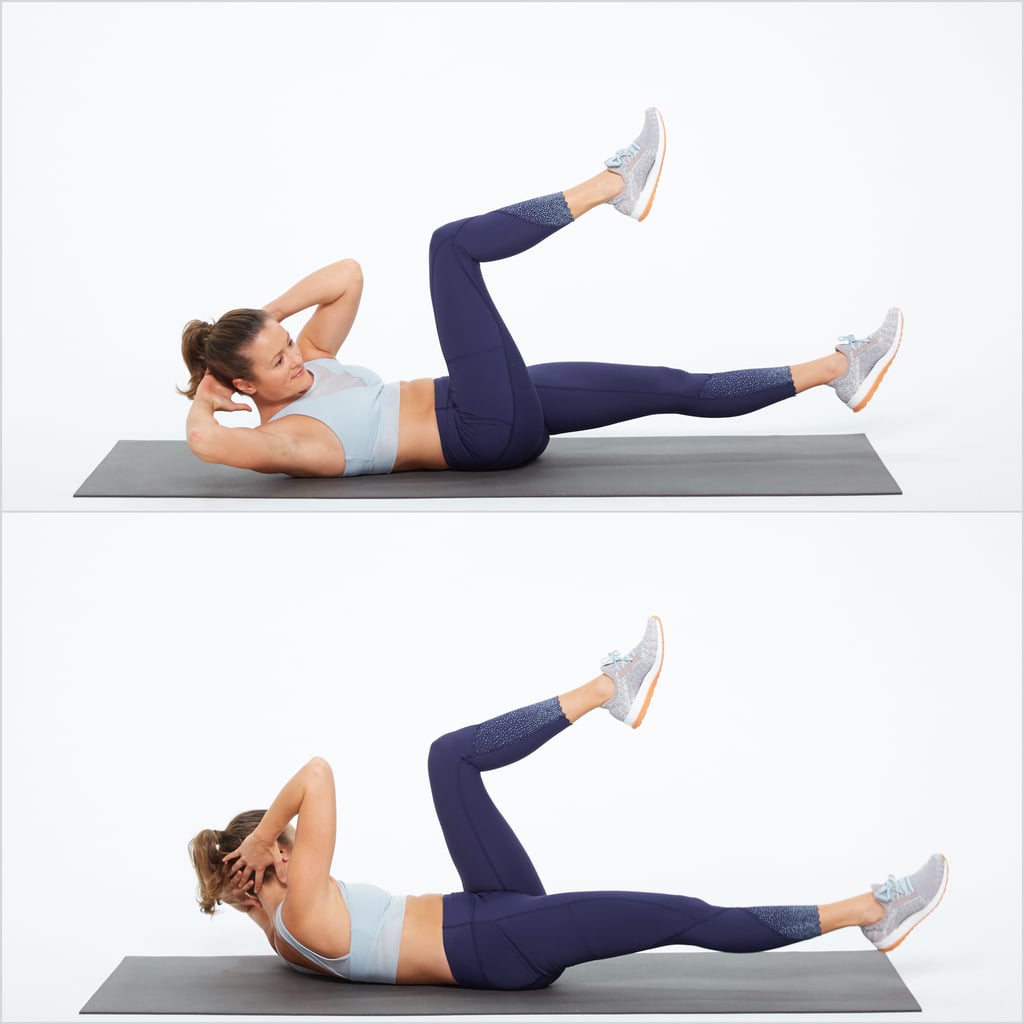

Quality goes before quantity and ensures that the muscles are challenged really hard. The point is not to do as many as possible, but to tense the body firmly in the process. But do not put them down!īicycle crunches are most effective when you do 10 to 20 reps per side and only then give yourself a break. Return the upper body, elbow and leg to the starting position.They touch at about the same height as the center of your body. Pull your left elbow toward your right knee.Turn the head and shoulder slightly to the right.Lift your legs, head and shoulders off the exercise mat.Tighten your abdominal muscles while pulling your navel towards your back.Place your hands loosely on the back of your head.

Take on this 30 day belly challenge! How do Bicycle Crunches go? What I would like to give you in advance: Do Bicycle Crunches slowly! Take your time and tighten your muscles. Of course, a little more is needed to perform the abdominal exercise properly. If you feel a burning in your abs, you're doing everything right. The execution of Bicycle Crunches reminds a little of cycling. If you translate the exercise, then Bicycle Crunches are bicycle abdominal crunches in German - however, hardly anyone calls the exercise by its German name. The exercise did not get its name from somewhere. Many also suggest that this execution helps to Burn belly fat - why this is not the case, we will clarify later. The Bicycle Crunch is one of the best exercises for building strength in the core while toning the legs. Why can't I lose weight on my stomach with Bicycle Crunches?.The most common mistakes with Bicycle Crunches.Which muscles are trained during crunches?.Your shoulders should stay off the mat, while your lower back should stay pressed to the mat. Keep your arms lifted overhead while lowering your legs back to the ground.Lift your upper back as you try to reach your hands to touch your feet.Lift your arms and legs, so they are extended up towards the ceiling.Alternate this twist to the other side and repeat.Ī toe tap crunch adds an extra level to the traditional crunch by targeting the upper and lower abs.As one knee comes up, rotate your abdomen to try to touch your opposite elbow to that knee.Bring one knee towards your armpit while straightening the other leg. Begin the movement similar to pedaling a bicycle.Keep your hands behind your head and lift your feet off the floor while raising your knees to a 90-degree angle.

Engage your core muscles, drawing in your ab muscles and stabilizing your spine.

Your lower back should be flush with the ground, and your hands should be behind your head.


 0 kommentar(er)
0 kommentar(er)
